The chances are pretty high that you either own or have ridden a bike with front suspension. It’s also extremely likely that your suspension fork (or the one you’ve tried) is a “traditional” telescopic model, and you’re reading this to see why on Earth any brand would consider making a linkage fork when current generation suspension is so good?
While we will happily try any innovative product with an open mind, we did wonder if the Motion Ride E18 would really offer any benefit over a quality telescopic model – I have been riding the excellent 2019 Fox Factory 36 after all! Surely it couldn’t be anywhere near as good, can it?

Rather than simply sending us a Motion Ride E18 Linkage fork in the post and let us get on with riding it Motion’s founder, Mathieu Alfano, actually hopped on the earliest available flight from Lyon, France to spend a day and a half with us while we rode his creation on our local trails.
This actually worked out really well, as we managed to gauge the performance of the E18 on our home turf, we had Mathieu on hand to answer questions, and the weather was glorious!
Watch our interview with Motion Ride founder Mathieu Alfano below:
Anti-Dive
Mathieu has been involved in mountain biking for decades and with a background in engineering it was only a matter of time before his two passions collided and he created something.
The idea of the Motion Ride E18 started when Mathieu was studying, and originally the idea was to see if it was possible to build a fork that offered true anti-dive properties.
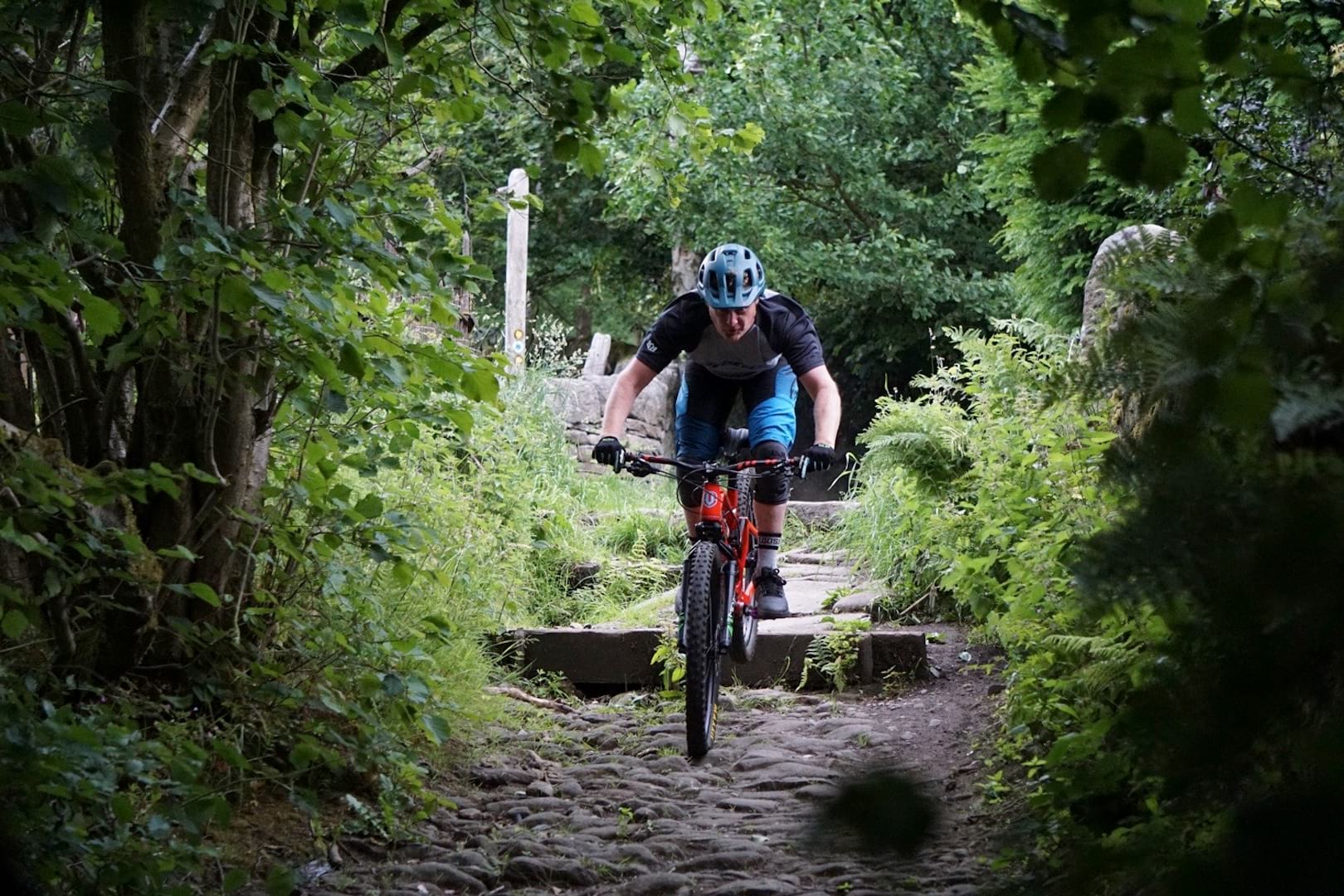
Rather than design a fork and then try to optimise it with the properties that he wanted, Mathieu first worked on the maths and calculating a formula that would show him exactly where each pivot point and linkage would need to be located for his idea to work.
After crunching the numbers, it was determined that an anti-dive fork was possible, and with the maths telling him exactly where each fulcrum needed to be located, it was just a matter of building a chassis and testing it in the real world.
Consistent Geometry
A benefit of a linkage fork and the anti-dive properties is that your geometry remains consistent while riding. So when you’re riding into a steep section of trail, for example with a drop-off and the need to brake, the bike will remain sat up in its travel and your body weight won’t be pushed forward.
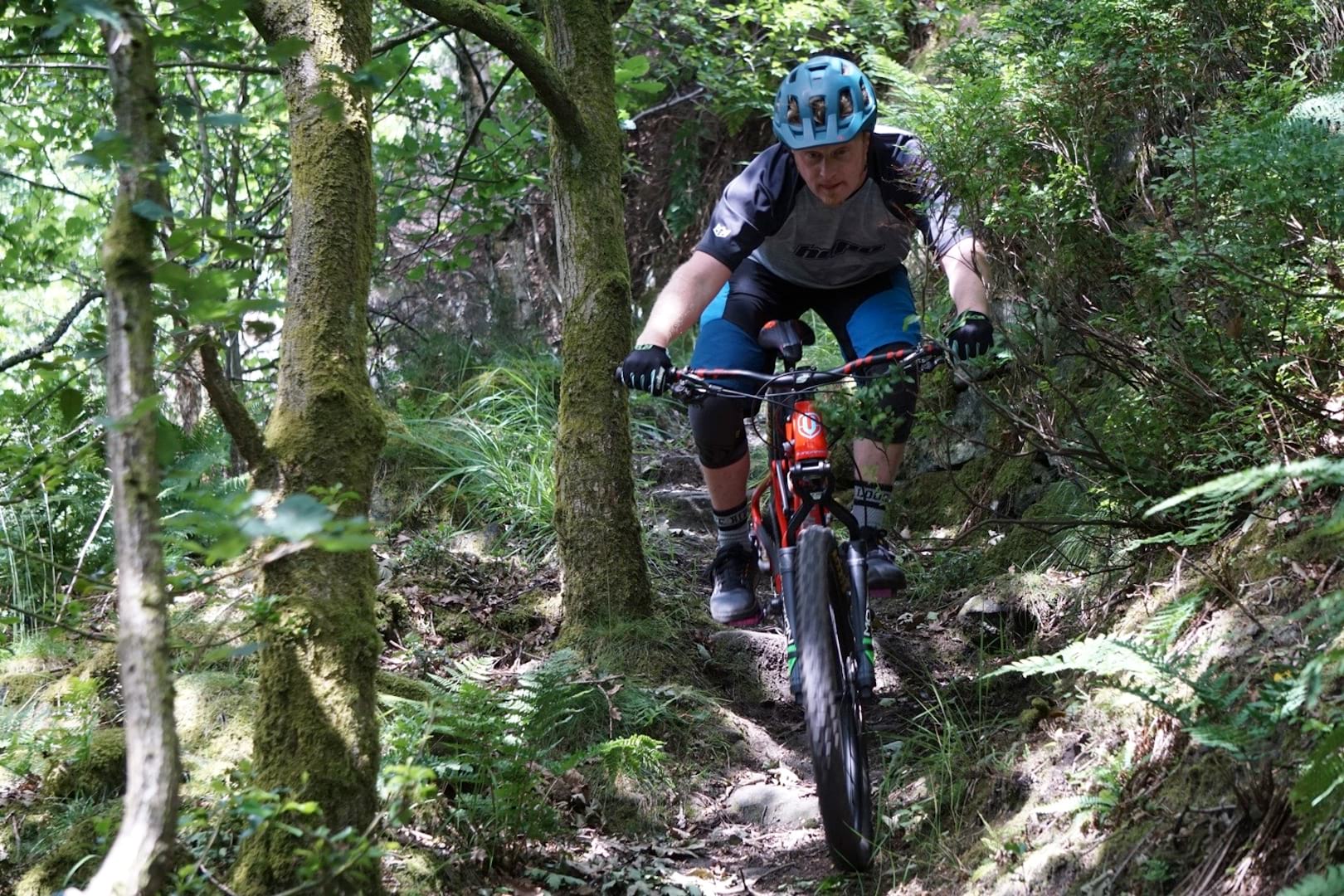
In all honesty, this is probably something that you have already adapted to while riding telescopic forks, but after a ride on an anti-dive system, you realise just how much more grip and confidence you have without that weight and geometry shift going on.
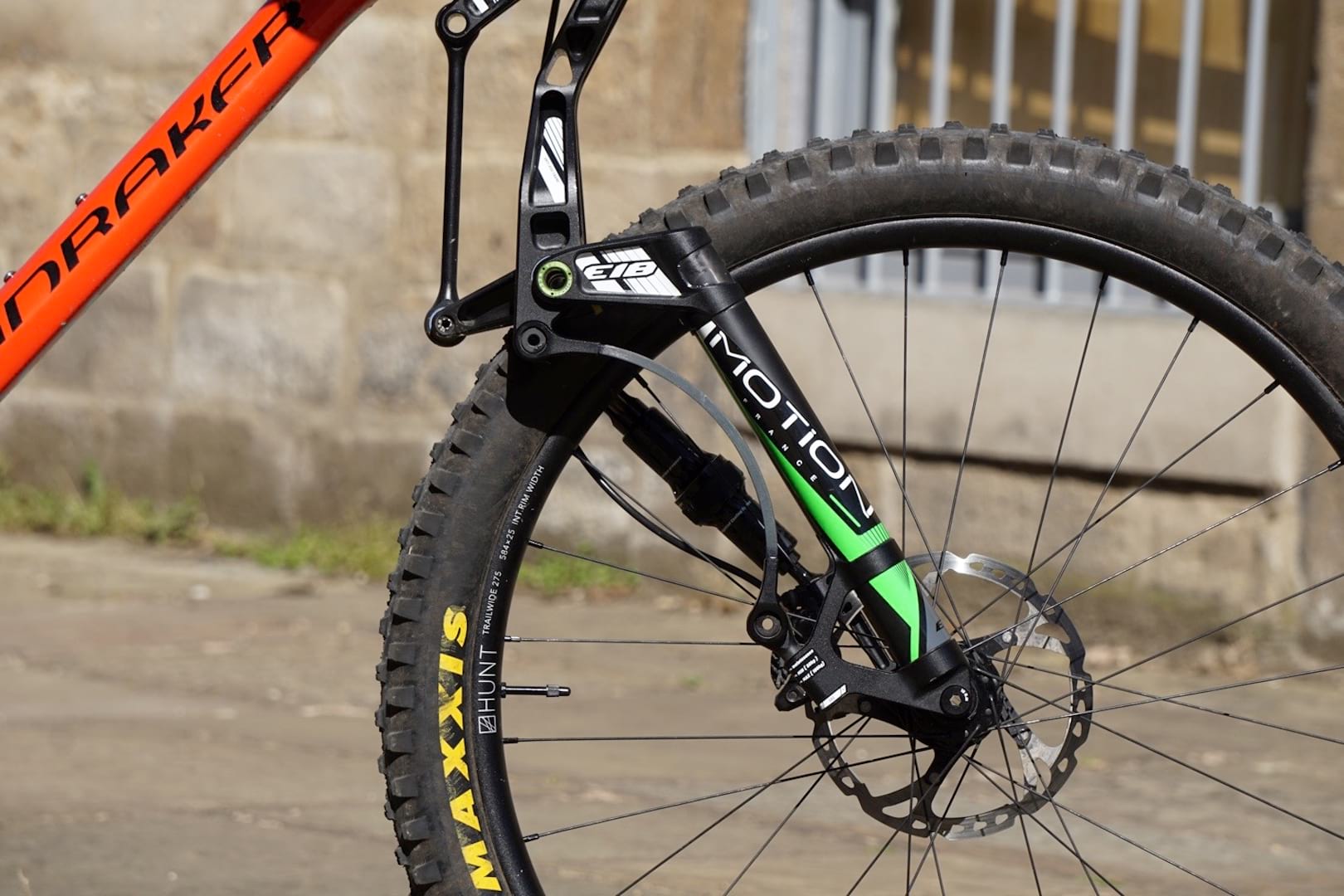
Wheelbase is also a measurement that is affected by telescopic forks. The more travel you use the further back your front wheel axle moves, so as you hit a really rough patch of trail where a long wheelbase will aid you and give you more stability, your fork is actually working against you.
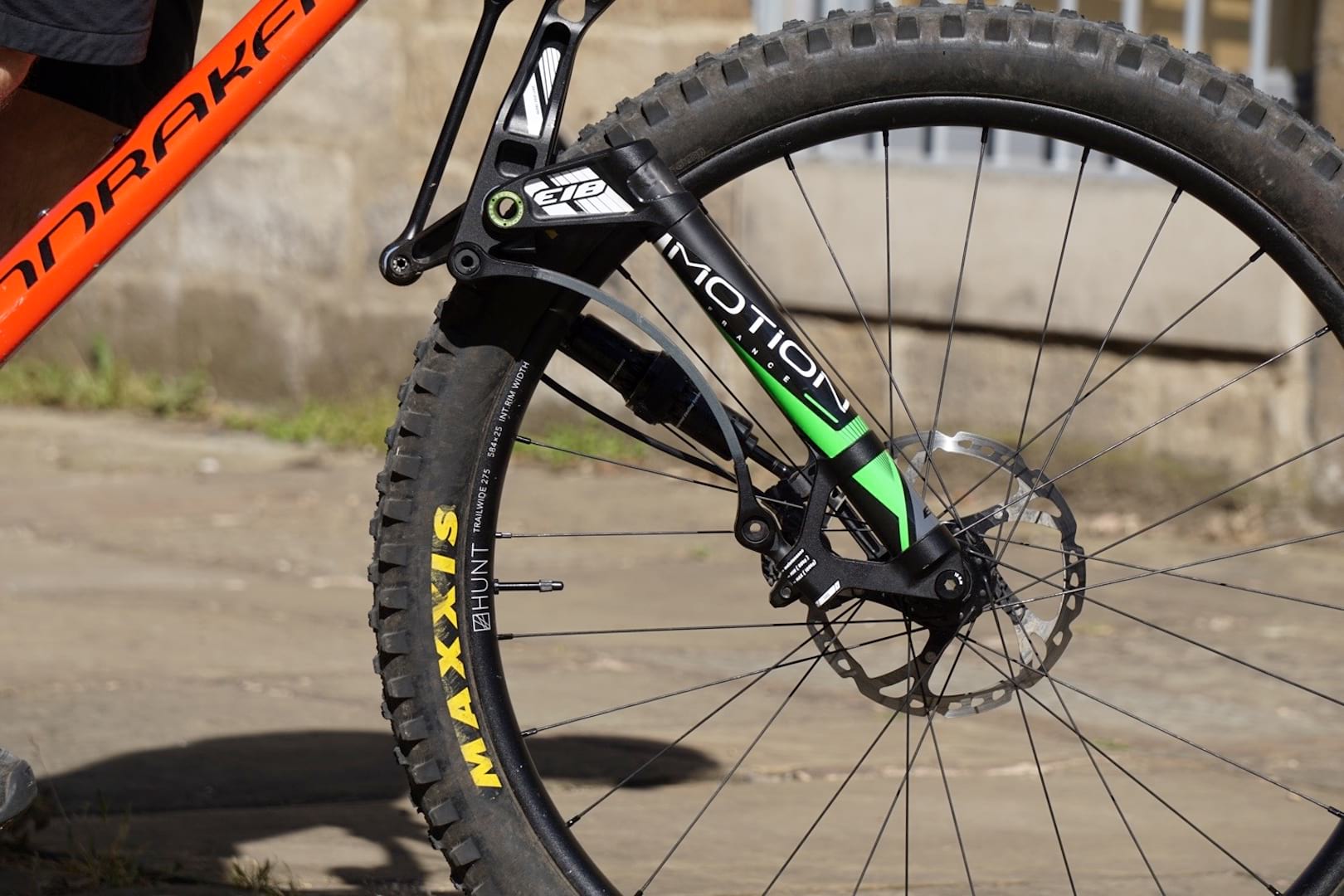
The linkage on the Motion E18 is designed so the axle path of the front wheel is vertical through the final 50% of travel, so retaining wheelbase and boosting stability in those sections of trail where you need it.
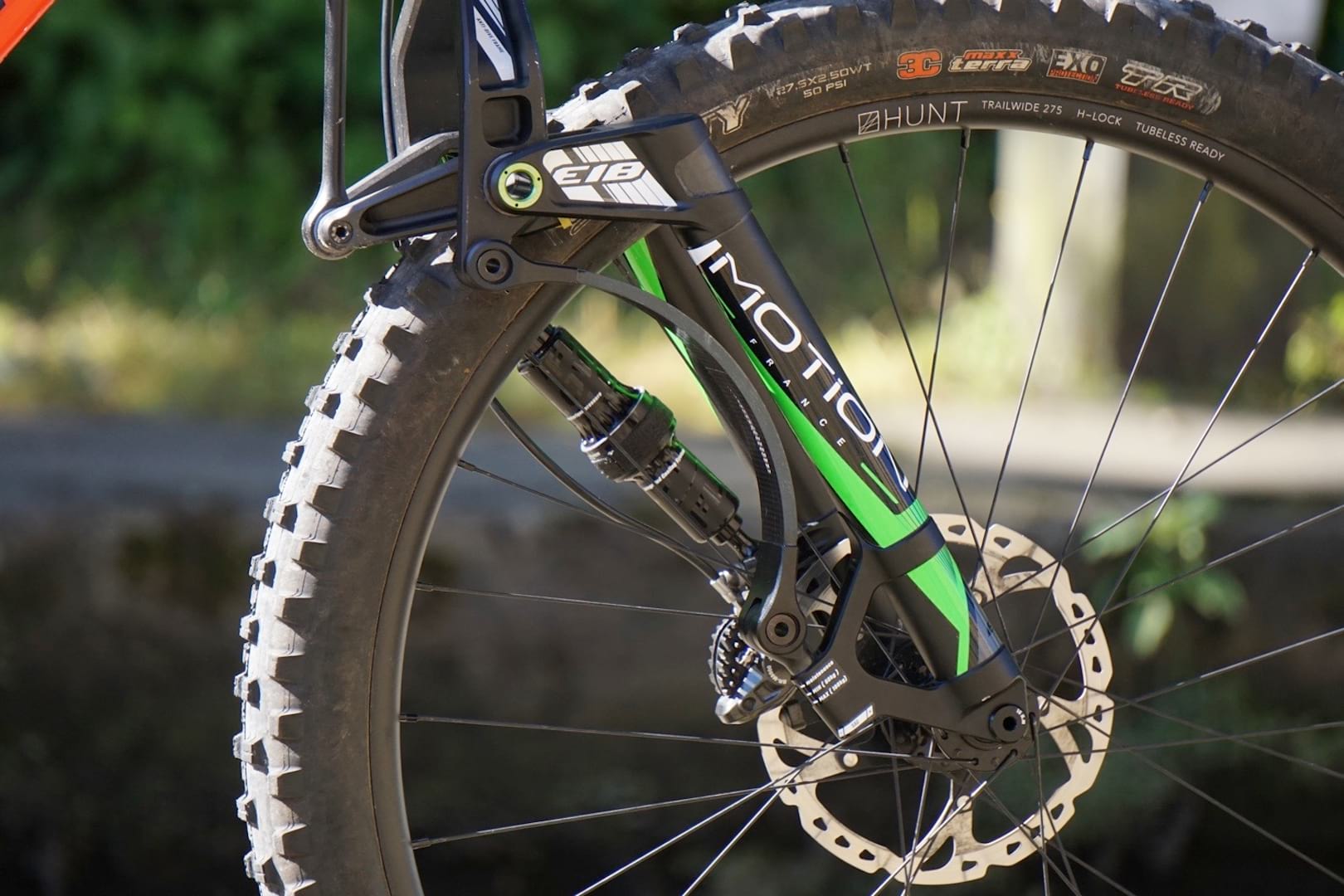
Carbon Beams For Springs?
After proving that a fork could be made that doesn’t dive when hitting the front brake, Mathieu turned his attention to the suspension medium of the fork.

The original Motion linkage fork that we reported on back in 2015 boasted dual carbon beams that acted as springs with a damper system that fits in the steerer.
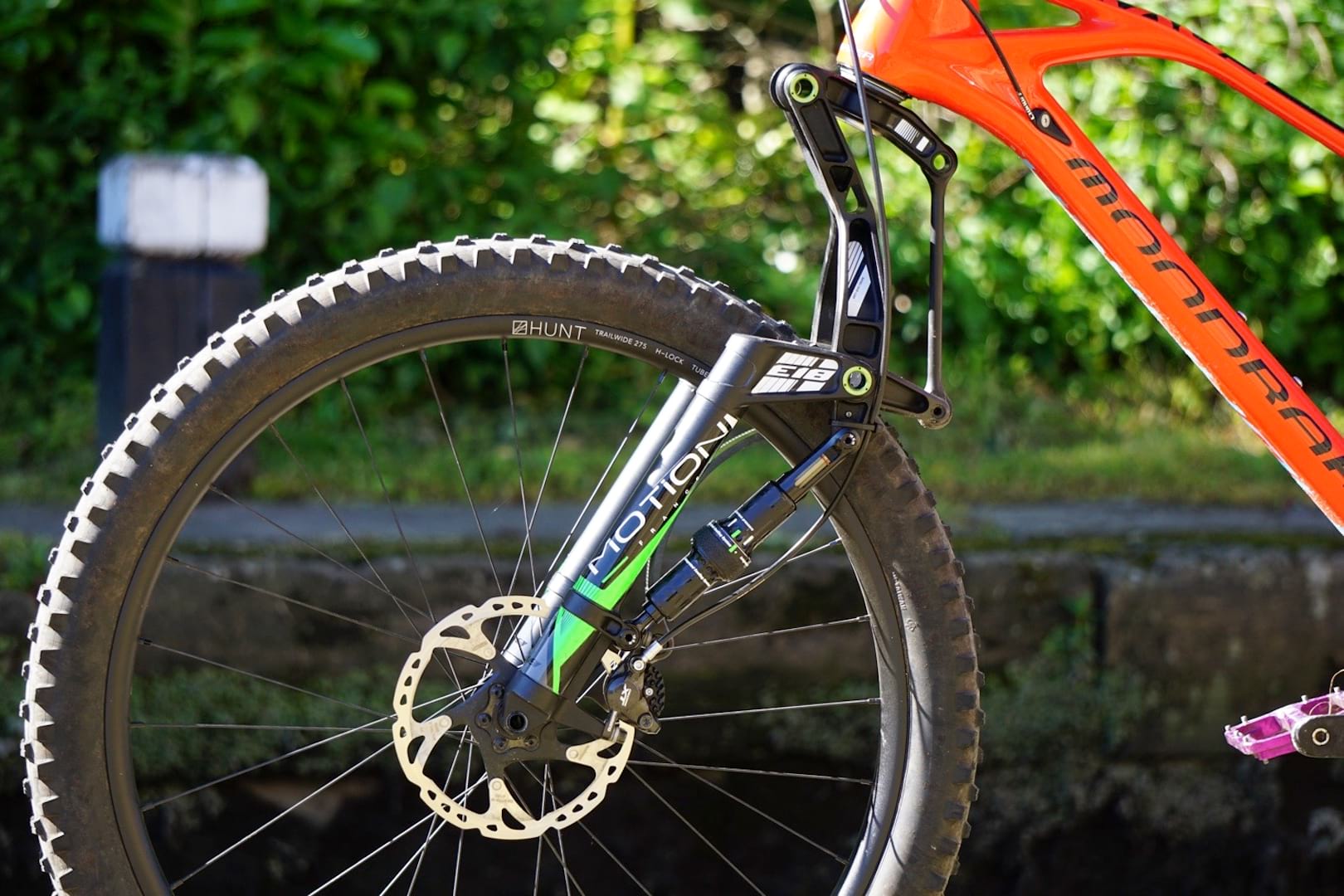
Things have moved on a lot since those early models, and now the production version comes with a single carbon beam named the ‘wave’ on the right fork leg, with a damper ‘curve’ system found on the left.
On first inspection, the carbon beam appears to be a leaf spring and you would expect that it would work under compression, but take another look.

In actual fact, the beam is designed to work under tension, like a ‘pull spring’ would. What’s more, the beam is manufactured in a curve so that when the fork is under compression the carbon fibers are actually being pulled straight.
The design also means that Motion’s Wave offers a progressive spring curve, whereas a traditional leaf spring is linear.

And that’s not all! Regardless of rider weight, you will only ever need one carbon beam, all that’s needed to adjust the fork for different rider weight is the preload of the beam. This is handled by a titanium 6mm bolt.
Zero Stiction
We don’t talk about stiction as much as we did in the early years of suspension forks, but the truth is all forks still suffer from a little stiction so when designing the damper for the Motion E18 this was something else the company wanted to eradicate.
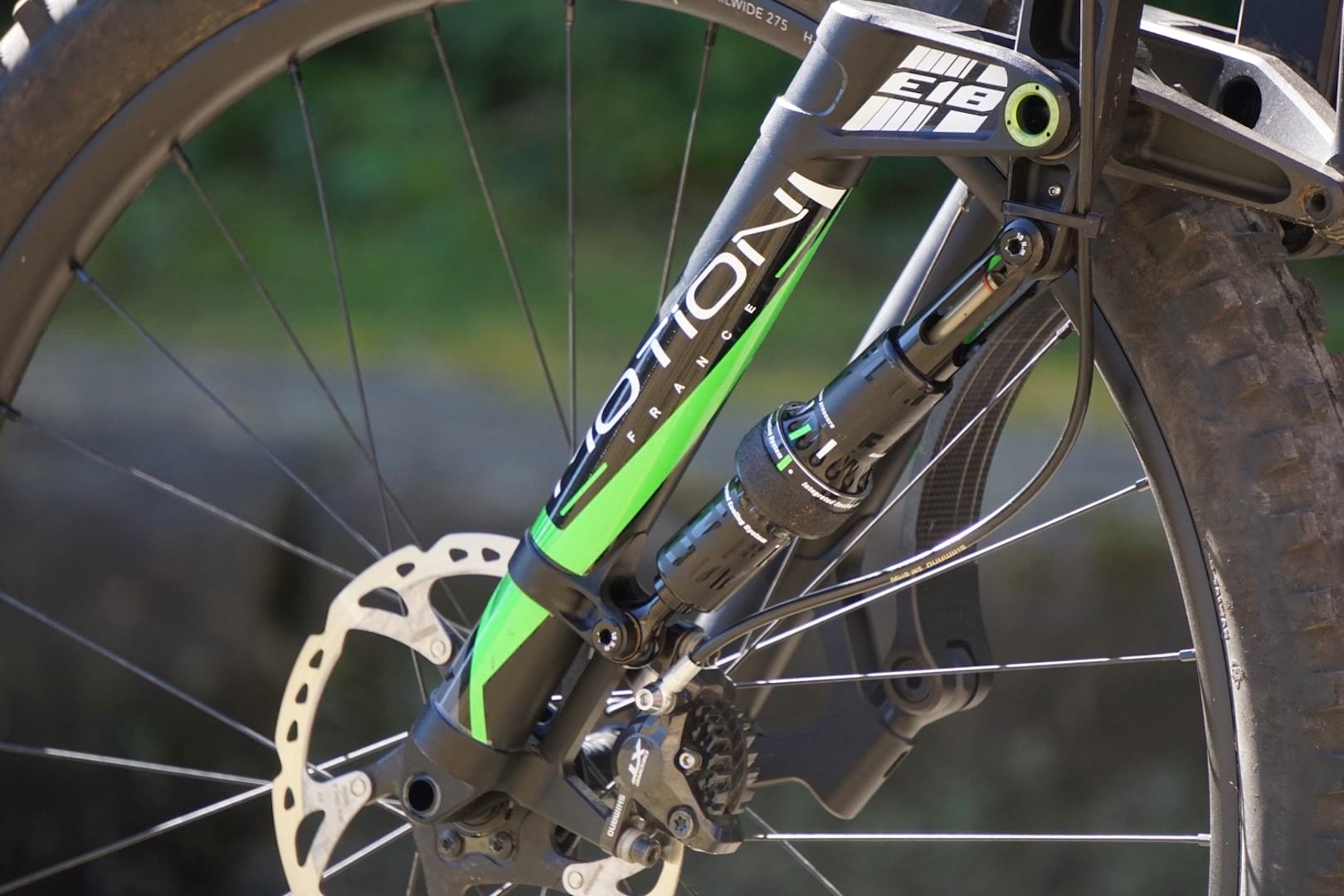
Generally, stiction is felt as a ‘break-through’ force at the start of the stroke of the fork. It happens because the of the high-pressure air seals in your fork needs to be tight enough to prevent leaks and require a small amount of force to get things moving. So it’s great air and oil isn’t pouring from your fork every ride, but not ideal that small bump performance is hampered.
Motion looked at this issue and decided the best course of action was simply remove all high-pressure seals. They’re able to do this because there is no high-pressure air system for the spring medium, and the damper is a low-pressure system.

If that wasn’t enough, the ‘Curve’ damper also features an oil circulation system that ensures that the operating temperature of the oil remains optimal and consistent during your ride.
2 Forks In 1
When Motion decided to design its own damper they approached a large manufacturer who said that they could do it but it would take two years. Motion decided that wasn’t fast enough and managed to complete the job in just five weeks.
In addition to the low-pressure, zero stiction features of the ‘Curve’ damper, Motion has managed to create an easily adjusted system that in effect offers the rider two forks in one package.
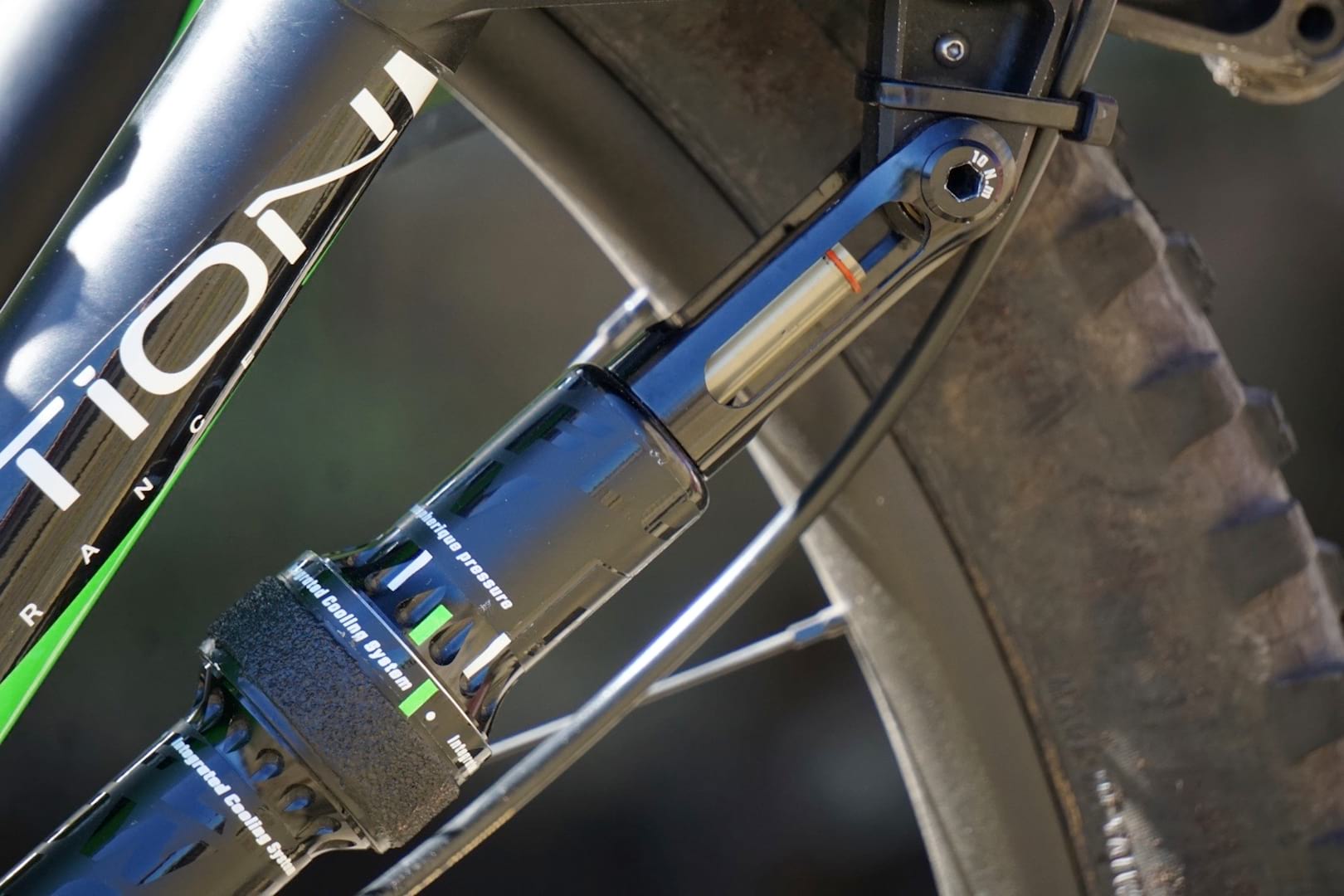
The damper system has one simple adjustment that does two completely different things depending on how you turn it. Adjust the ‘Curve’ damper anti-clockwise and all you’re adjusting is the rebound of the system. For my time on the bike I only needed one click from the green line for it to work just how I like it, but if you needed faster rebound you just add on more clicks.
Now, what happens though if you pop to the bike park where the jumps are huge, there are pump sections and the trails are buttery smooth? Well, you simply adjust the damper into the ‘Firm’ model. i.e turn the damper clockwise from the green line. There are three firm modes to choose from, giving you more support for those flow trails.
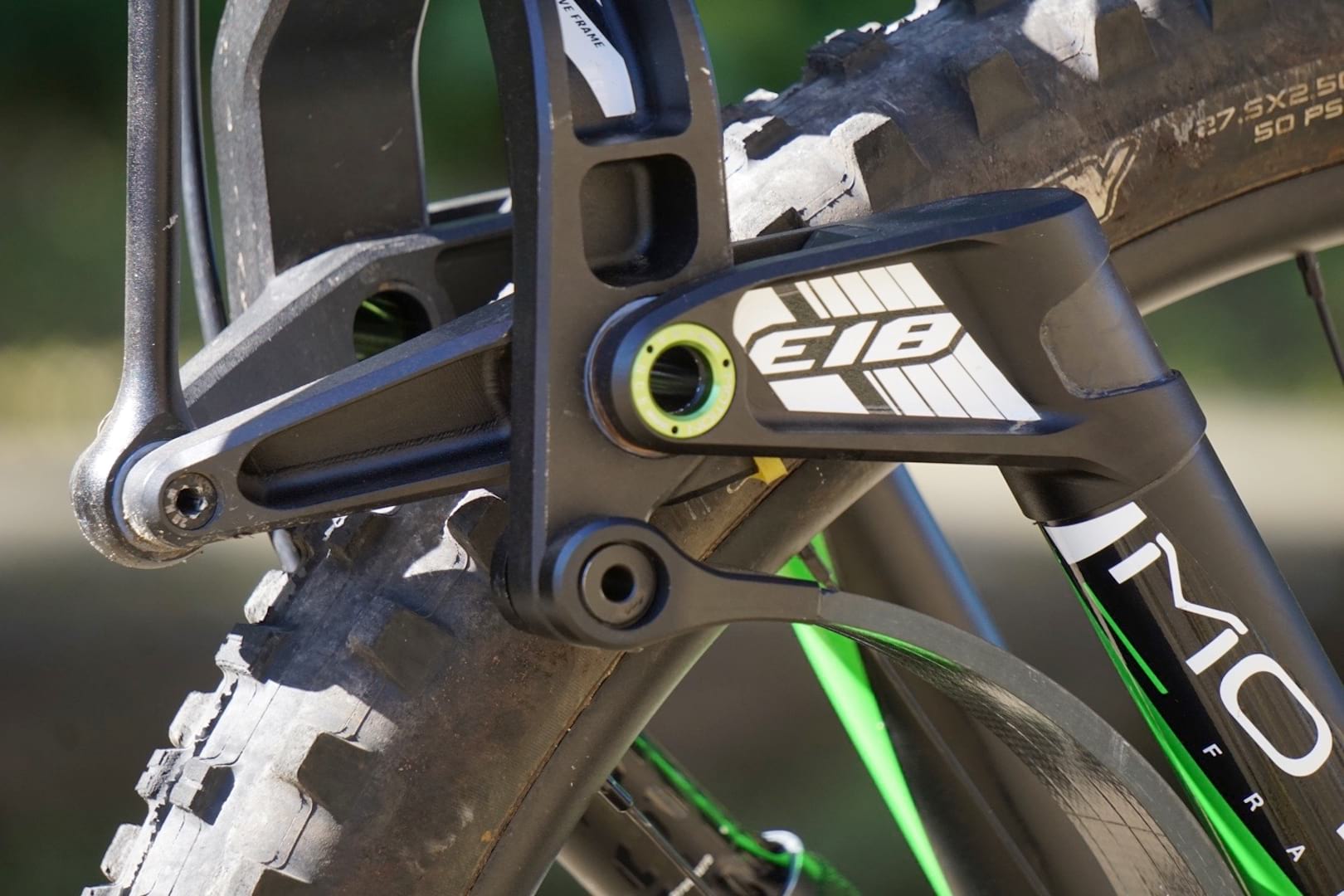
No Maintenace, Just Have Fun
So with dive eradicated, stiction removed, and an easy to understand and simple damper system developed the Motion team decided that they wanted to get rid of another problem… maintenance.
One of the obvious concerns about linkage forks is the number of pivot points that they have and the fact that over time they will develop play and bearings will need to be replaced. Surely this is the downfall of the Motion E18? Actually no! Motion claims that the E18 doesn’t need any maintenance to the pivots, bearings will never need replacing and no play will ever develop. What? Really? How?!
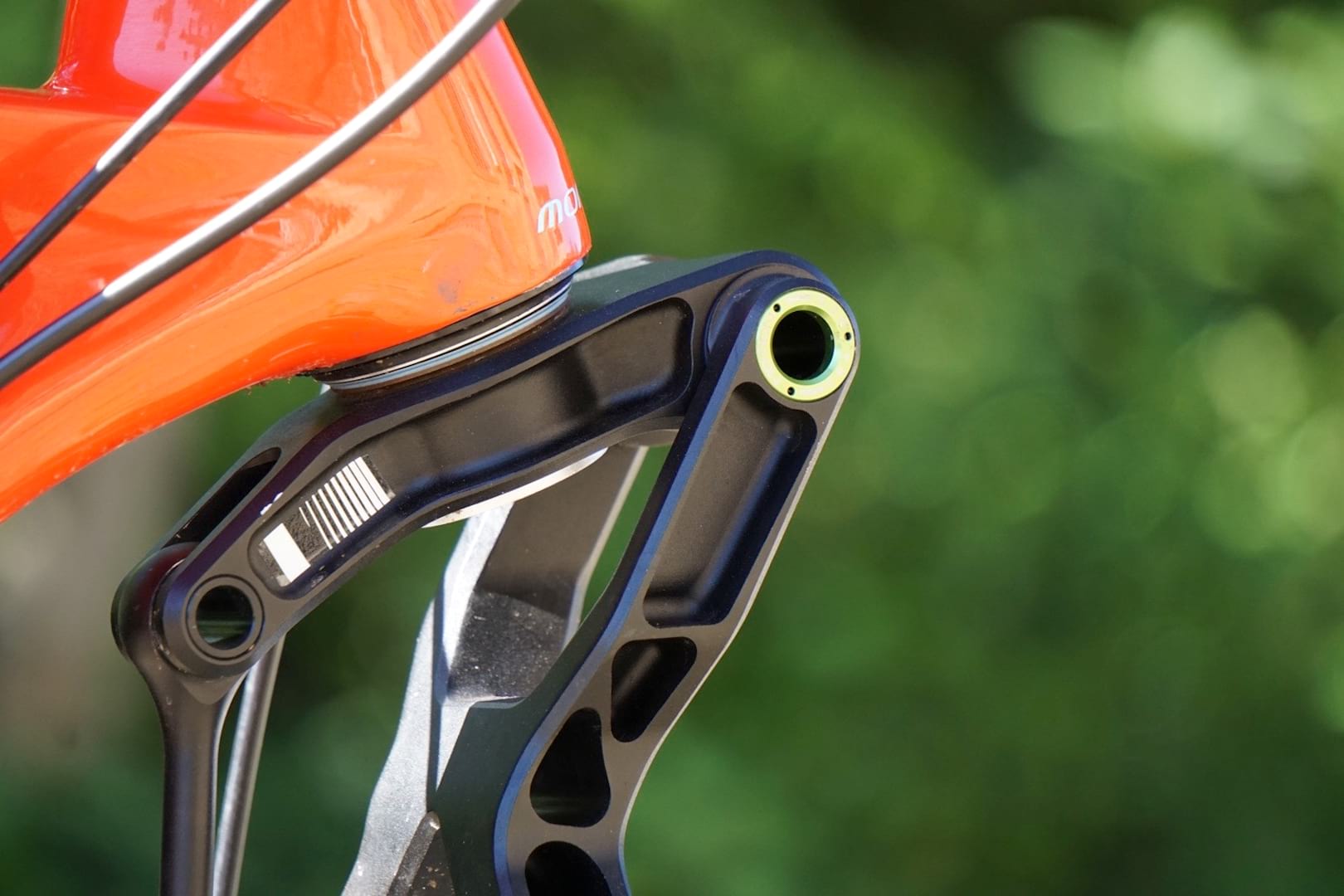
First of all Motion isn’t using bearings, but instead, a composite bushing made from a material that was originally intended for use in deep sea machinery applications. Motion is so confident that the pivots won’t need maintenance that they have actually pressed the axles in with a heavy-duty hydraulic press. Even if you wanted to take it apart and service you wouldn’t be able to.
As for cleaning, well Mathieu tells us you don’t really need to, but if you decided that your E18 did need a spruce you that you should use a pressure washer… Yes, that’s right! A suspension fork maker is telling us to use a pressure washer on bushings, pivots, and dampers!
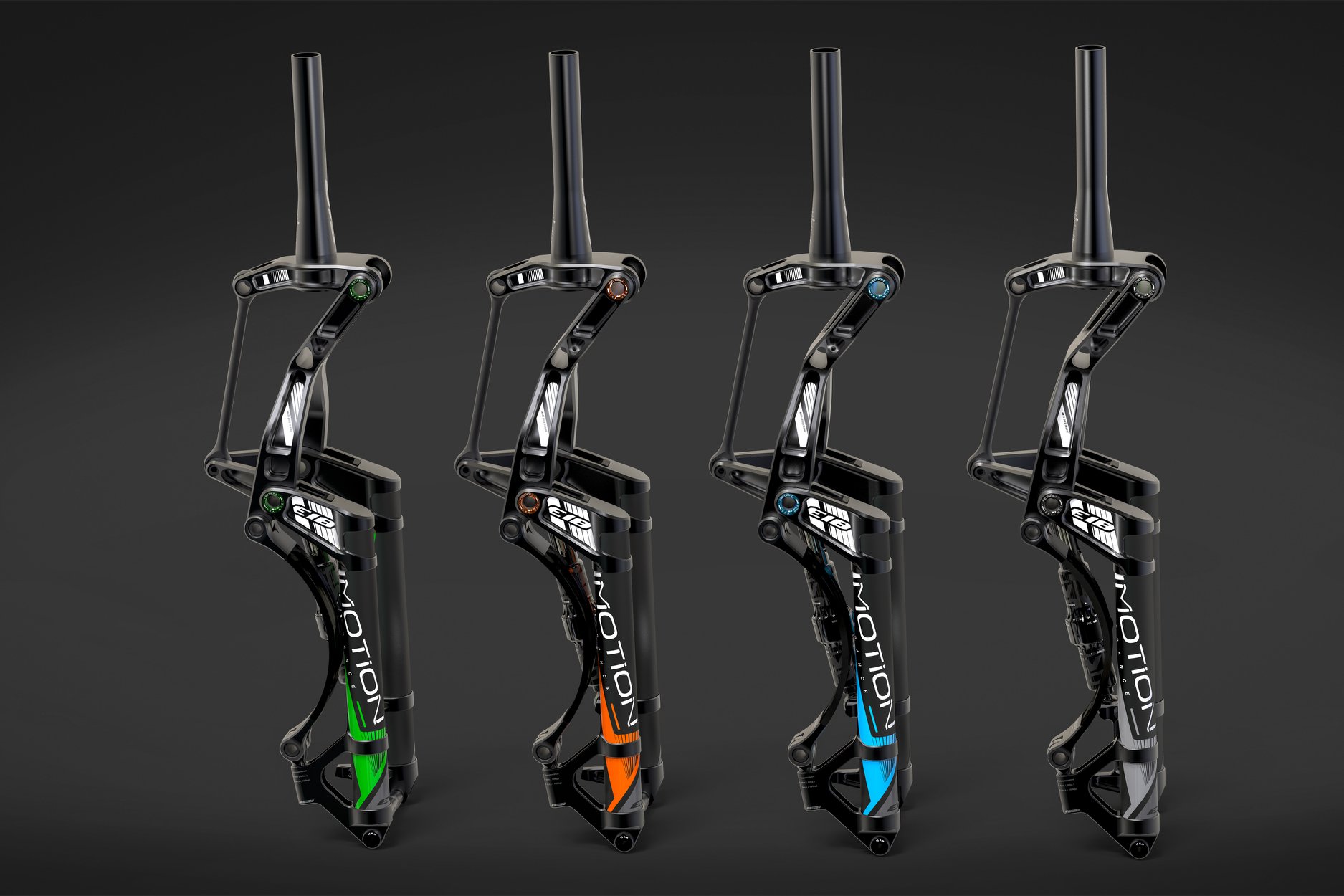
The only item on the linkage system that is easily removed are the decorative end caps which come in green, blue, silver and red.
Features
At the time of writing, Motion ride only has the trail/enduro version of its linkage fork available to demo and only for 27.5in wheel sizes, but a 29er will come in the future that’s also good for plus sized 27.5in wheels, and there are plans for an XC fork and even a DH fork too.
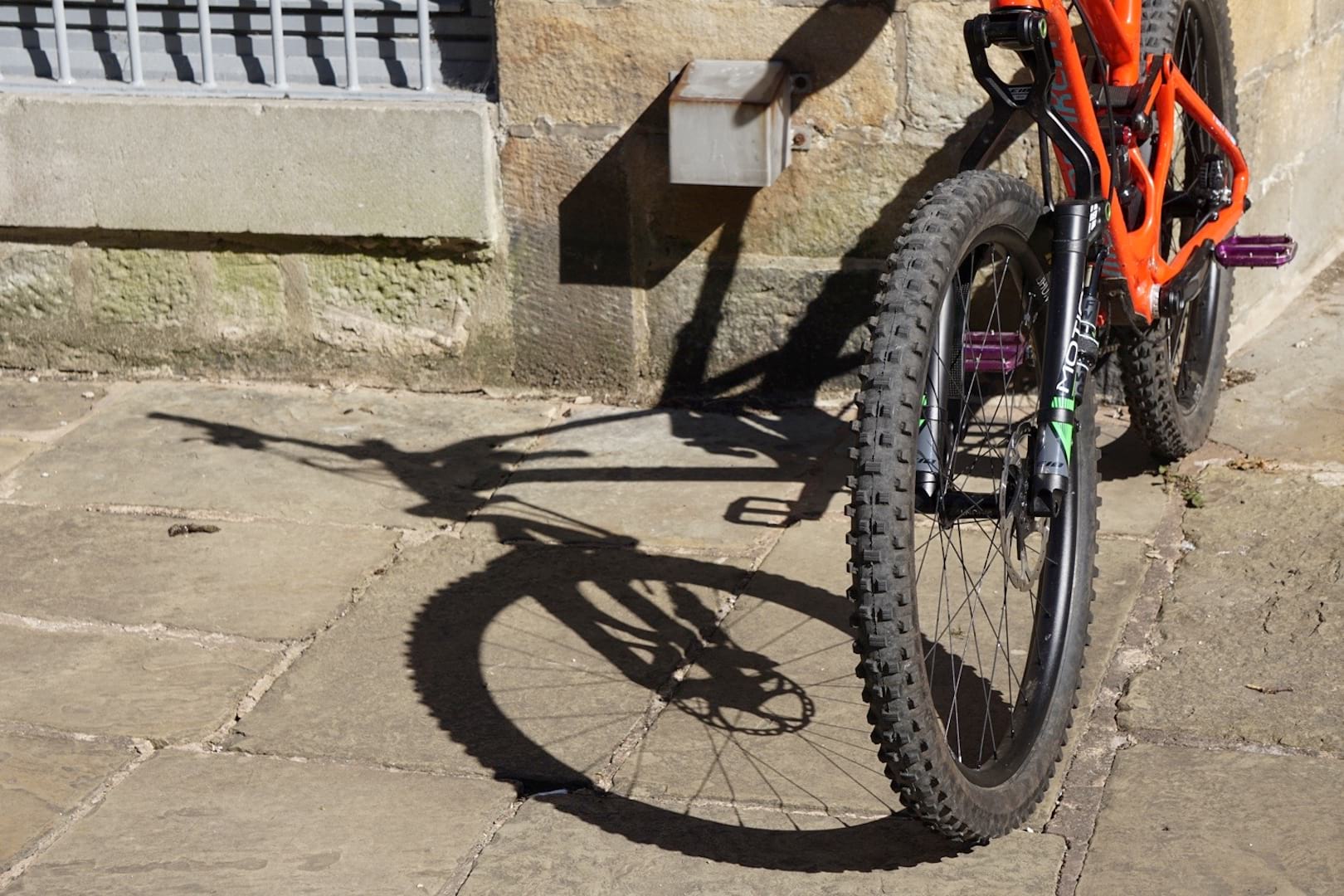
The E18, the fork we’re looking at here, is for 27.5in wheels only and is available in 150mm, 160mm, and 170mm travel options. If you’re on 29in wheels or 27.5+ you’ll need the E18+. This version of the fork comes in 140mm, 150mm, and 160mm travel variants.
Each version of the fork is manufactured with carbon fork legs bonded and pressed to an alloy chassis that is first forged then CNC machined to save weight. Each fork comes with Motion Ride’s own lightweight 15mm thru axle with 110mm Boost hub spacing.
Motion Ride E18 Features
- Wheelsize // 27.5in
- Weight// 2.1kg
- Min Rotor Size // 180mm
- Travel // 150mm, 160mm, 170mm
- Offset // 44mm, 45mm, 46mm
- Axle To Crown // 545mm, 555mm, 565mm
- Hub spacing // 15x110mm Boost (100mm non-Boost available on request)
- Price // 1590 Euros
Motion Ride E18+ Features
- Wheelsize // 29/27.5+
- Weight // 2.1kg
- Min Rotor Size // 180mm
- Travel // 140mm, 150mm, 160mm
- Offset // 51mm, 51mm, 51mm
- Axle To Crown // 555mm, 565mm, 575mm
- Hub spacing // 15x110mm (non Boost available on request)
- Price // 1590 Euros
Motion Ride is currently holding a pre-order system with 500 forks set to ship out to customers in September this year. However, early customers also have the option to become an ambassador for Motion Ride which gives them a 20% discount at checkout in return for rider feedback to the company.
We’ll have more information about how the fork rode in our first ride review article later this week, but if you have any questions about this fork today please add them to the comments below and we’ll answer them as soon as we can.






@Ming the Merciless well, funnily enough, I removed a 2019 36 Factory from the Foxy to test the Motion E18, and as much as I love and rate the 36 the E18 is a better fork.
I’ve never ridden the PRST1 but saw one a couple of years back, it’s not so young owner rider swore by it..
Clearly this is not a cheap option, but given the very small interval between services, and the cost/hassle, on the current air forks this could be viable simply on economics grounds…
And for those lucky enough to have multiple bikes in their quiver with XC bikes with Lauf front ends, an obvious ‘addition’
What options are there for mud guards with this? Obviously having no crown makes it difficult, plus it doesn’t look like you could run a mud guard that mounts in the steerer tube looking at the photos due to the pivot at the rear. Would be a bit of a shame to not be able to fit something (other than maybe a crud guard) on seeing as this seems like the perfect all year round fork with requiring no maintenance.
@touchingewe First thing we asked, “can you fit a mudguard?” apparently there’s a company in France already making them 😀
@singletrackandi Thanks! Now I know I can fit a mud guard I’d best get saving (may take a few years). A maintenance free suspension fork that works well and can be jet washed sounds perfect!